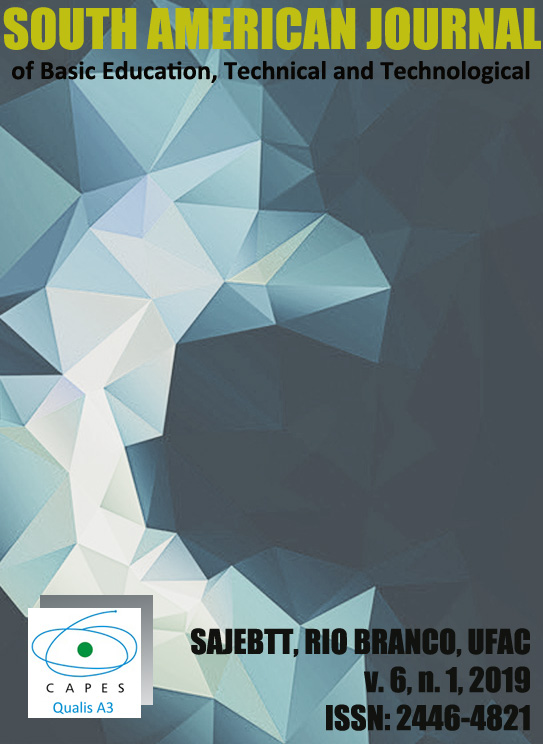TOTAL ENERGY EXPENDITURE: SOFTWARE ESTIMATION AS A NEW APPROACH
Resumo
ABSTRACT
Quantifying total energy expenditure is essential to management of the main comorbidities of 21st century. The present work aims to discuss a new approach to the calculation of total energy expenditure (TEE). To evaluate the TEE there is a need for more precise indirect methods. Software and an algorithm are presented and discussed as an alternative to current indirect estimation methods. We conclude that the new approach can bring significant advantages of precision and accessibility when compared to alternative ones.
Keywords: Physical activity, Software, Questionnaires
RESUMO
Quantificar gasto energético total é imprescindível no manejo das principais comorbidades do século 21. O presente trabalho tem como objetivo discutir uma nova abordagem para o cálculo do gasto energético total (GET). Para avaliar o GET há necessidade de métodos indiretos mais precisos. Um software e um algoritmo são apresentados e discutidos como alternativa para os correntes métodos indiretos de estimativa. Conclui-se que a nova abordagem pode trazer vantagens significativas de precisão e acessibilidade quando comparada às outras.
Palavras-chave: Atividade física, Software, Questionários.Downloads
Referências
MONTEIRO, J. B. R. Métodos de avaliação do gasto energético., 2015. Disponível em: < http://arquivo.ufv.br/dns/energetico.html >. Acesso em: 2019/05/06.
VAN MECHELEN, W. et al. Physical activity of young people: the Amsterdam Longitudinal Growth and Health Study. Med Sci Sports Exerc, v. 32, n. 9, p. 1610-6, Sep 2000.
WESTERTERP, K. R. Physical activity and physical activity induced energy expenditure in humans: measurement, determinants, and effects. Front Physiol, v. 4, p. 90, 2013.
LEE, P. H. et al. Validity of the International Physical Activity Questionnaire Short Form (IPAQ-SF): a systematic review. Int J Behav Nutr Phys Act, v. 8, p. 115, Oct 21 2011.
HARRIS, J. A.; BENEDICT, F. G. A Biometric Study of Human Basal Metabolism. Proc Natl Acad Sci U S A, v. 4, n. 12, p. 370-3, Dec 1918.
CRAIG, C. L. et al. International physical activity questionnaire: 12-country reliability and validity. Med Sci Sports Exerc, v. 35, n. 8, p. 1381-95, Aug 2003.
EDWARDS, B.; SOUZA, T. M. F.; WICIUK, J.P. S.; BARBOSA, G. M.; MASTRO, A. C.; BORTOLINI, C. S. F.; MENEGUETTI, D.U.O.; SILVA, R. P. M.; BORTOLINI, M. J. S. The efficiency of International Physical Activity Questionnaire (IPAQ): a systematic review. 2019. (In Pub)
AINSWORTH, B. E. et al. 2011 Compendium of Physical Activities: a second update of codes and MET values. Med Sci Sports Exerc, v. 43, n. 8, p. 1575-81, Aug 2011.
BYRNE, N. M. et al. Metabolic equivalent: one size does not fit all. J Appl Physiol (1985), v. 99, n. 3, p. 1112-9, Sep 2005.
AINSWORTH, B. E. et al. Compendium of physical activities: classification of energy costs of human physical activities. Med Sci Sports Exerc, v. 25, n. 1, p. 71-80, Jan 1993.
TURNER, J. E. Is immunosenescence influenced by our lifetime "dose" of exercise? Biogerontology, v. 17, n. 3, p. 581-602, Jun 2016.










